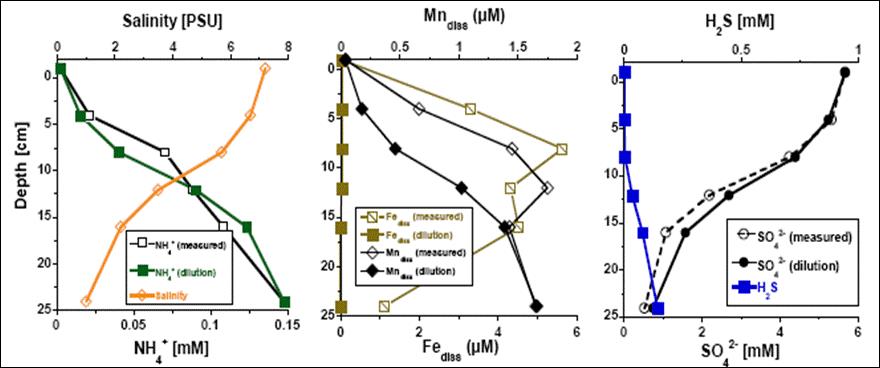G1: The influence of terrestrial input on fluxes from and element (C-N-S-P, metals) transformations in shallow water sands of the Baltic Sea coast
supervised by Böttcher, Voss, Jurasinski

Focus
The influence of water (submarine groundwater discharge, SGD) and substances from the peatland to the Baltic Sea for element transformations in and fluxes from sandy sediments is in the target of this topic of Baltic TRANSCOAST. By means of multi-isotope, trace element and nutrient analysis in the water column, the sediments and ground waters from wells covering a transect between the bog and the Baltic Sea we will identify element sources, sinks and transformations and their regulating factors. This is of particular interest for understanding the biogeochemical development of coastal ecosystems in times of rising sea-level.
State of the Art
In coastal environments, sandy sediments may act as an active bioreactor, caused by intense advective water transport and further promoted by SGD. The interactions between aqueous solutions and reactive solid phases may lead to dynamic fixation and transformations of nutrients, carbon species, redox sensitive elements and a partial export of the products to the coastal waters. Furthermore, processes taking place in the groundwater and the interactions with brackish solutions upon SGD discharge are important factors controlling the overall element balance, thereby impacting the benthic-pelagic coupling of biogeochemical element cycles in the coastal Baltic Sea.
Work program
In the first phase, concentrations and stable isotope ratios (H, O, C, N, S) and selected redox-sensitive elements in water, dissolved and solid species will be followed on a transect between the peatland and the coastal zone as well as on vertical transects in the water column and sediments of the coastal Baltic Sea. 2H and 18O signatures of water will allow for the development of the local meteoric water line as well as the seasonality in riverine input as a base for a water budget. Together with measurements of Ra and Rn, this will lead to the detection of SGD sites as well as to identification of element transformations. The application of flux chambers (seepage meters) and pore water lances will complement the sampling at wells to allow for a flux determination of water and elements and analyses of biogeochemical processes.
